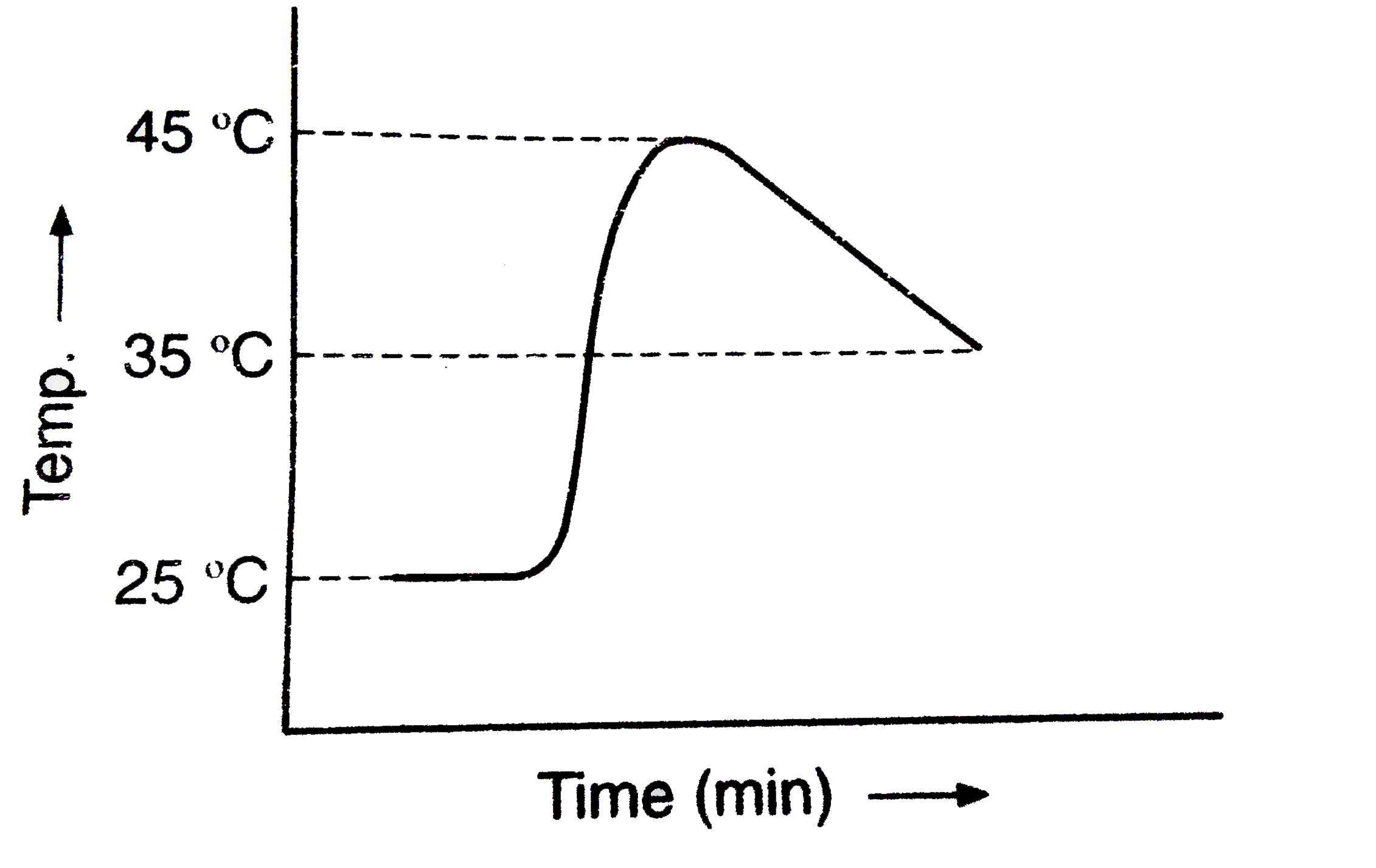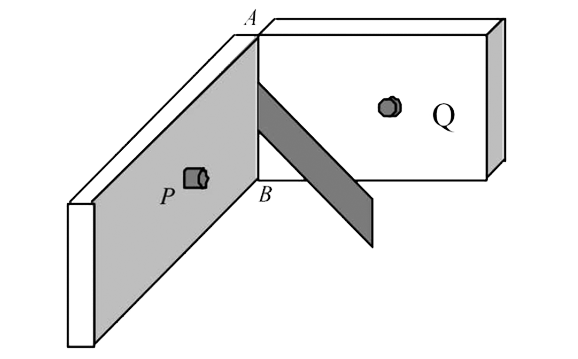A meterial Safety Date sheet (MSDS) provides what types (S) of information anout a chemical ?
(P) First aid measures
(Q) Handing and storage tips
P only
Q only
Both pand Q
Neither P nor Q
The correct Answer is:c
Step by step video, text & image solution for A meterial Safety Date sheet (MSDS) provides what types (S) of information anout a chemical ? (P) First aid measures (Q) Handing and storage tips by Chemistry experts to help you in doubts & scoring excellent marks in Class 11 exams.
Topper's Solved these Questions
- BOOK - GRB PUBLICATIONCHAPTER - QUANTUM NUMBERS AND GENERAL CHEMISTRYEXERCISE - B.68videos
QUANTUM NUMBERS AND GENERAL CHEMISTRY
- BOOK - GRB PUBLICATIONCHAPTER - QUANTUM NUMBERS AND GENERAL CHEMISTRYEXERCISE - C,6videos
QUANTUM NUMBERS AND GENERAL CHEMISTRY
- BOOK - GRB PUBLICATIONCHAPTER - PRACTICAL ORGANIC CHEMISTRYEXERCISE - Exercise 4 (Matrix match type )1videos
PRACTICAL ORGANIC CHEMISTRY
- BOOK - GRB PUBLICATIONCHAPTER - REDOX REACTIONSEXERCISE - All Questions332videos
REDOX REACTIONS
Similar Questions
In this sectin each item consists of six sentences of a passage. The first and sixth sentences are given in the beginning as S1 and S6. The middle four sentences in each have been jumbled up and labelled as P, Q, R and S. You are required to find the proper sequence of the four sentences and mark your response accordingly on the Answer Sheet.
S1 : Palaeontology is the study of the remains of dead organisms over enormous spans of time.
S6 : Faunal analysis gives information about the animal people hunted and domesticated, the age of animal at death, and the diseases that afflicted them.
P : Bones provide a great information.
Q : The distribution of faunal remains (animal bones) at a site can indicate which areas were used for butchering, cooking, eating, bone tool making and refuse dumping.
R : Within this discipline, molecular biology and DNA studies have been used to understant hominid evolution.
S : Hominid evolution answers the questions about what ancient people looked like, and to plot patterns of migration.
The correct sequence should beView SolutionIn this section, each item consists of six sentences of a passage. The first and sixth sentences are given in the beginning as S1 and S6. The middle four sentences in each item have been jumbled up and labelled as P, Q, R and S. You are required to find the proper sequence of the four sentences and mark your response accordingly on the Answer Sheet.
S1: Institutions define and play a regulatory role with regard to human behaviour. S6 : It shows how important it is for a nation to build institutions for nurturing democracy.
P : Once established, institutions set a dynamic relationship with the members constituting them and they mutually affect each other,
Q : They shape preferences, power and privilege.
R : At the same time, institutions themselves can be transformed by the politics they produce and such transformation can affect social norms and behaviours.
S : They also provide a sense of order and predictability.
The correct sequence should beView Solution
Knowledge Check
- Question 1 - Select One
Chemical reactions are invariable associated with the transfer of enery either in the form of heat or light. In the laboratory, heat energy I physical and chemical processes are measured with an instrument called caloriemter. Heat change in the process is calcualted as:
q−msΔT, s=specific heat
=cΔT, c= Heat capacity.
Heat of reaction at constant pressure is measured using bomb calorimeter.
qV=ΔU= Internal energy change
heat of reaction at constant pressure is measrued using simple or water calorimeter.
qP=ΔH
qP=qV+PΔV
ΔH=ΔU+ΔnRT
The amount of energy released during a chemical change depends on the physical state of reactants and products, te conditions of pressure, temperatrue and volume at which the reaction is carried out. the variation of heat of reaction with temperature and pressure is given by kirchhoff's equation:
ΔH2−ΔH1T2−T1=ΔCP, ΔU2−ΔU1T2−T1=ΔCV.
Q.
What value of ΔT should be used for the calorimetry experiment that gives the following graphical result?A10∘CB25∘CC20∘CD35∘C - Question 2 - Select One
Chemical reactions are invariable associated with the transfer of enery either in the form of heat or light. In the laboratory, heat energy I physical and chemical processes are measured with an instrument called caloriemter. Heat change in the process is calcualted as:
q−msΔT, s=specific heat
=cΔT, c= Heat capacity.
Heat of reaction at constant pressure is measured using bomb calorimeter.
qV=ΔU= Internal energy change
heat of reaction at constant pressure is measrued using simple or water calorimeter.
qP=ΔH
qP=qV+PΔV
ΔH=ΔU+ΔnRT
The amount of energy released during a chemical change depends on the physical state of reactants and products, te conditions of pressure, temperatrue and volume at which the reaction is carried out. the variation of heat of reaction with temperature and pressure is given by kirchhoff's equation:
ΔH2−ΔH1T2−T1=ΔCP, ΔU2−ΔU1T2−T1=ΔCV.
Q. The enthalpy of fusion of ice is 6.02 kJ mol−1. The heat capacity of water is 4.18Jg−1.∘C−1. What is the smallest number of ice cubes at 0∘C, each containing one mole of water, that are needed to cool 500 g of liquid water from 20C to 0∘C?A1B7C14D125 - Question 3 - Select One
In the following five questions, read the passage carefully and choose the best answer to each question out of the four alternatives.
A library is an organised collection of sources of information and similar resources, made accessible to a defined community for reference or borrwing. It provides physical or digital access to meterial, and may be a physical buliding or room, or a virtual space, or both. A library.s collection can include books, periodicals, newspapers, manuscripts, films, maps, e-books and other formats. Libratries range in size from a few shelves of books to several million items. A library is organised for use is minitained by a public body, an insitituon, a corportion, or a private individual. Public and insitutional collecrtions and services may be interded for use by people who chose not to or connot afford to purchase an extensive collection themselves, who need material to individual can reasonably be expected to have, or who require professional assistance with their research. In addition to providing materials, libraries also provide the servies of librarians who are experts at finding and organishing information and at interpreting information needs. Libraries ofter provide quiet areas for studing and they also offer common areas to facilitate group stydy and collaboration. Libraries are extending services beyond the physical walls of a buliding by providing maerial accessible by electronic means.
What is the present status and function of libraries?AThere is privacy in library.BLibraries are confinements.CThey have become redundant.DThere is no privacy in a library.
Given below are six sentences of a passage. The first and sixth sentences are given in the beginning as SI and S6. The middle four-sentence in each have been jumbled up and labelled as P, Q, R and S. You are required to find the proper sequence of the four sentences.S1: The dawn of the information age opened up great opportunities for the beneficial use of data.
S6: To some, in this era of Big Data analytics and automated, algorithmbased processing of zettabytes of information, the fear that their personal data may be unprotected may conjure up visions of a dystopian world in which individual liberties are compromised.
P : But it is the conflict between the massive scope for progress provided by the digital era and the fear of loss of individual autonomy that is foregrounded in any debates about data protection laws.
Q : It also enhanced the perils of unregulated and arbitrary use of personal data.
R: It is against this backdrop that the White Paper made public to elicit views from the public on the shape and substance of a comprehensive data protection law assumes significance.
S : Unauthorised leaks, hacking and other cyber crimes have rendered data bases vulnerable.
The correct sequence should beView SolutionChemical reactions are invariably associated with the transfter of energy either in the form of heat or light. In the laboratory, heat changes in physical and chemical processes are measured with an instrument called calorimeter. Heat change in the process is calculated as
q=msΔTs=Specific heat=cΔTc=Heat capacity
Heat of reaction at constant volume is measured using bomb calorimeter.
qV=ΔU= Internal energy change
Heat of reaction at constant pressure is measured using simple or water calorimeter.
qp=ΔH
qp=qV+PΔV
ΔH=ΔU+ΔnRT
The enthalpy of fusion of ice is 6.02kJmol−1. The heat capacity of water is 4.18Jg−1C−1. What is the smallest number of ice cubes at 0∘C, each containing one molw of water, the are needed to cool 500g of liquid water from 20∘C→0∘C?View SolutionIn the following items, each passage consists of six sentences. The first and sixth sentence are given in the beginning as S1 and S6. The middle four sentences in each have been jumbled up. These are labelled P, Q, R ans S. You are requested to find out the proper sequence of the four sentences and mark according on the Answer Sheet.
S1: Now these two types of courage, physical and moral, are very distinct.
S6: Moral courage is a higher and rarer virtue than physical courage.
P: I have know many men who had marked physical courage, but lacked moral courage.
Q: On the other hand, I've seen men who undoubtedly possessed moral courage but were very cautious about taking physical risks.
R: But I've never met a man with moral courage, who would't, when it was really necessary, face bodily danger.
S: Some of them were in high places but they failed to be great in themselves because they lacked it.
The proper sequence should beView SolutionIn the following items, each passage consists of six sentences . The first the sixth sentence are given in the beginning as S1 and S6. The middle four sentence in each have been removed and jumbled up. These are labelled P,Q,R and S. You are requested to find out the proper sequence of four sentences and mark accordingly on the Answer Sheet.
S1: You ask me what I intend to do after graduation.
S6 : That would be a great relief to my parents.
P: My ambition is to become an engineer.
Q : I can complete this course in two years.
R: But I am not sure whether I shall get enough marks to qualify for admission to an engineering college.
S: If I don't take up engineering, I would like to do an M.Sc. in Physics.
The proper sequence should beView SolutionTwo heavy metallic plates are joined together at 90∘ to each other. A laminar sheet of mass 30kg is hinged at the line AB joining the two heavy metallic plates. The hinges are frictionless. The moment of inertia of the laminar sheet about an axis parallel to AB and passing through its center of mass is 1.2 kg m2. Two rubber obstacles P and Q are fixed, one on each metallic plate at a distance 0.5m from the line AB. This distance is chosen so that the reaction due to the hinges on the laminar sheet is zero during the impact. Initially the laminar sheet hits one of the obstacles with an angular velocity 1 rad/s and turns back. If the impulse on the sheet due to each obstacle is 6 N-s,
(a) Find the location of the center of mass of the laminar sheet from AB.
(b) At what angular velocity does the laminar sheet come back after the first impact?
(c) After how many impacts, does the laminar sheet come to rest?
 View Solution
View Solution

